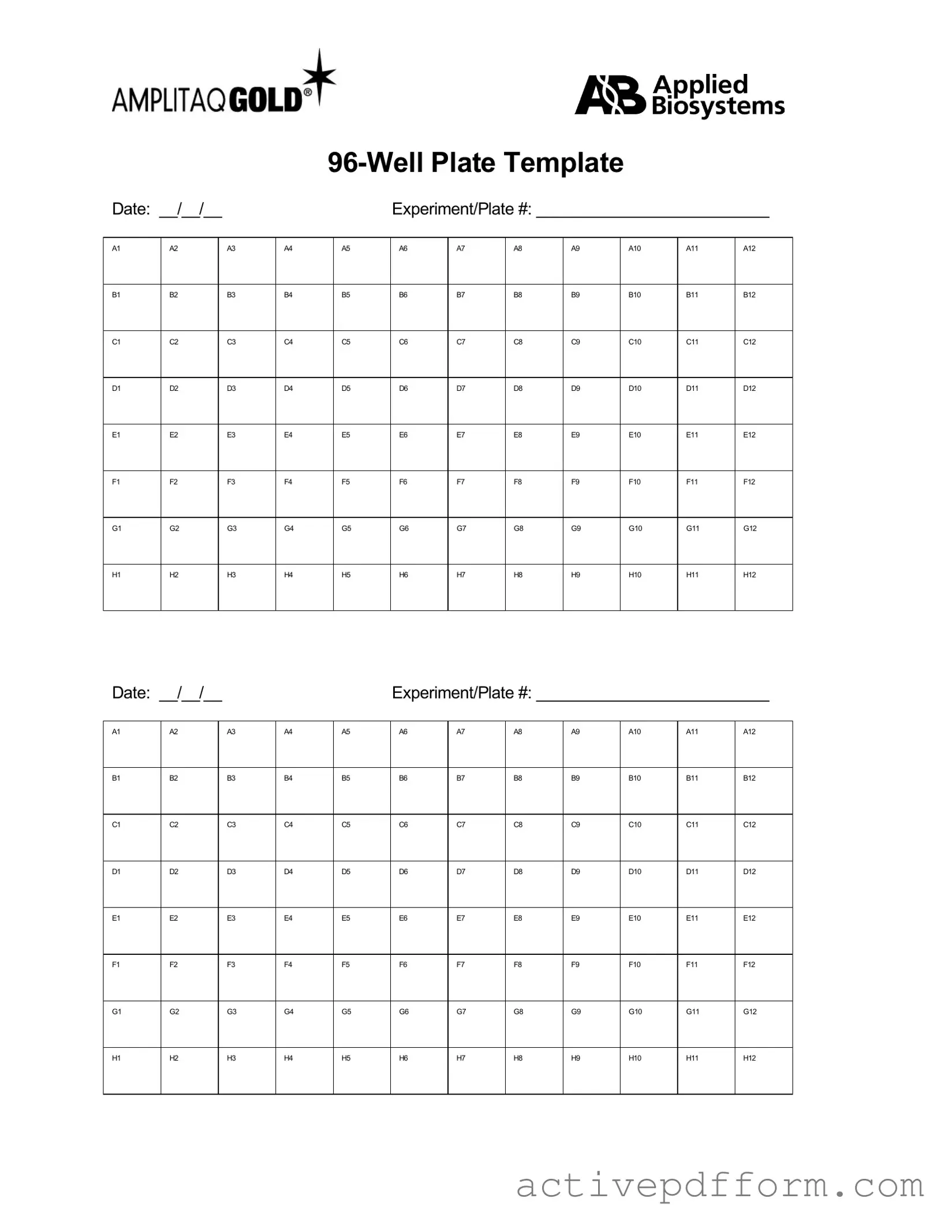What is the 96 Well form used for?
The 96 Well form is primarily utilized in laboratory settings for various applications, including sample preparation, assay development, and high-throughput screening. It allows for the simultaneous processing of multiple samples, enhancing efficiency and accuracy in experimental procedures.
How do I fill out the 96 Well form?
To complete the 96 Well form, begin by clearly labeling each well according to your specific experiment or protocol. Ensure that you enter the relevant data, such as sample identification, reagent volumes, and any necessary observations. It is important to maintain clarity and accuracy to prevent any confusion during the analysis phase.
Are there specific guidelines for using the 96 Well form?
Yes, there are general guidelines to follow when using the 96 Well form. Always use a consistent format for labeling and data entry. Avoid using abbreviations that may not be universally understood. Additionally, ensure that the form is completed in a neat and legible manner to facilitate easy review and interpretation.
What should I do if I make a mistake on the 96 Well form?
If an error occurs on the 96 Well form, it is essential to correct it promptly. Cross out the incorrect entry with a single line and write the correct information beside it. Initial and date the correction to maintain a clear record of changes. Avoid using correction fluid, as it can obscure important information.
Can I use the 96 Well form for different types of experiments?
Yes, the 96 Well form is versatile and can be adapted for various types of experiments. Whether conducting biochemical assays, cell culture experiments, or genetic analyses, the form can accommodate different protocols. Ensure that the information entered is relevant to the specific experiment being conducted.
Where can I obtain a blank 96 Well form?
A blank 96 Well form can typically be obtained from laboratory supply vendors, research institutions, or online resources dedicated to scientific documentation. It is important to select a form that meets the specific requirements of your laboratory or research project.

